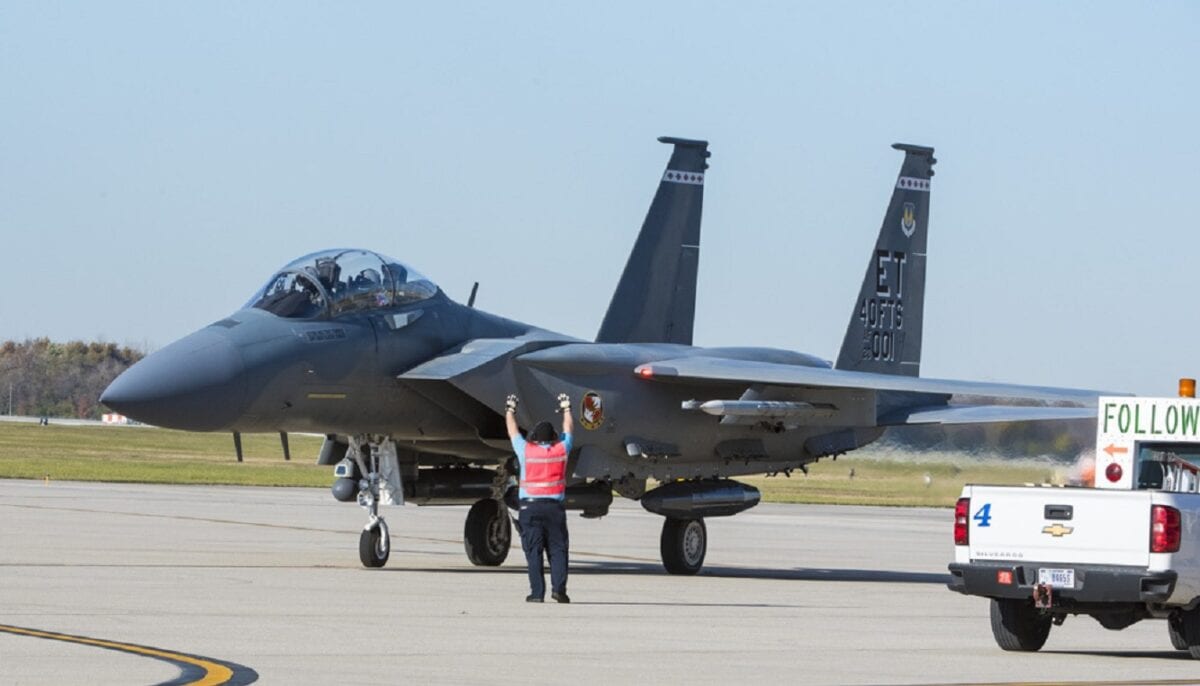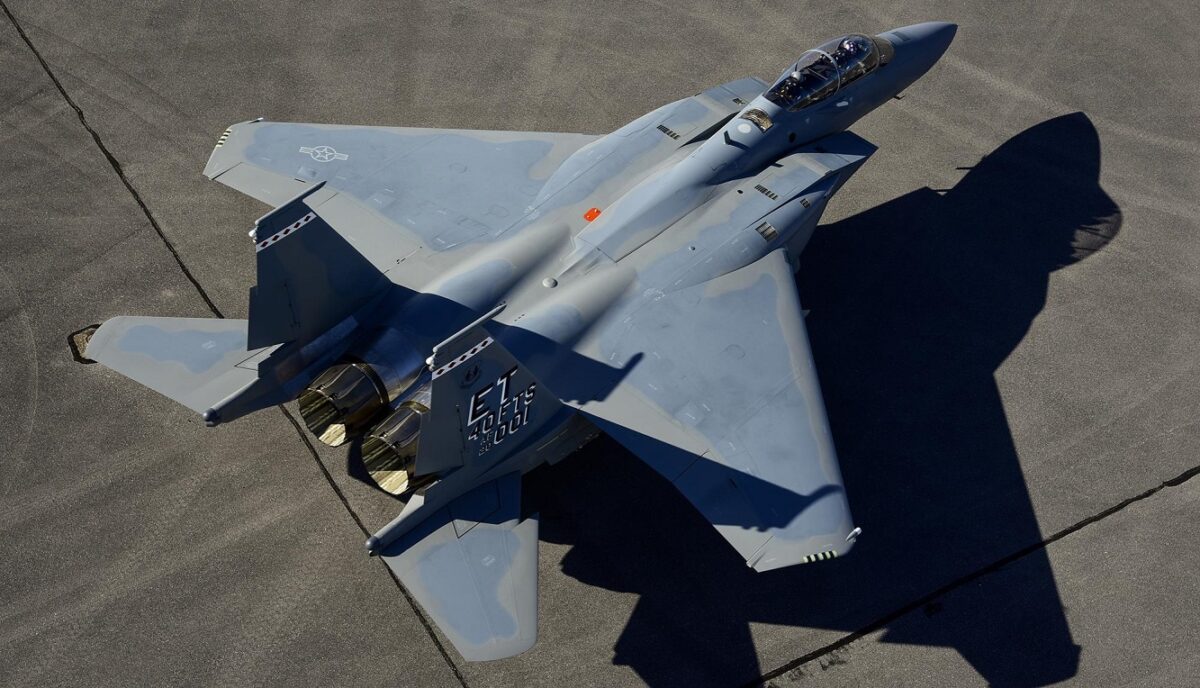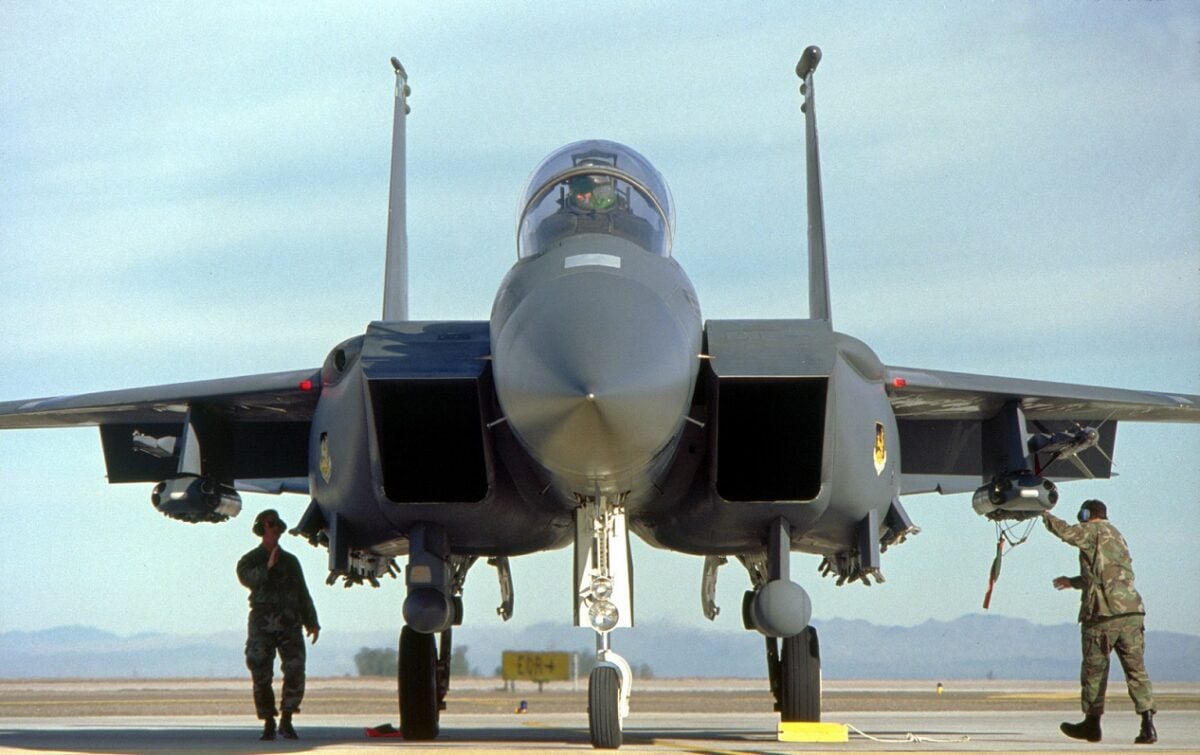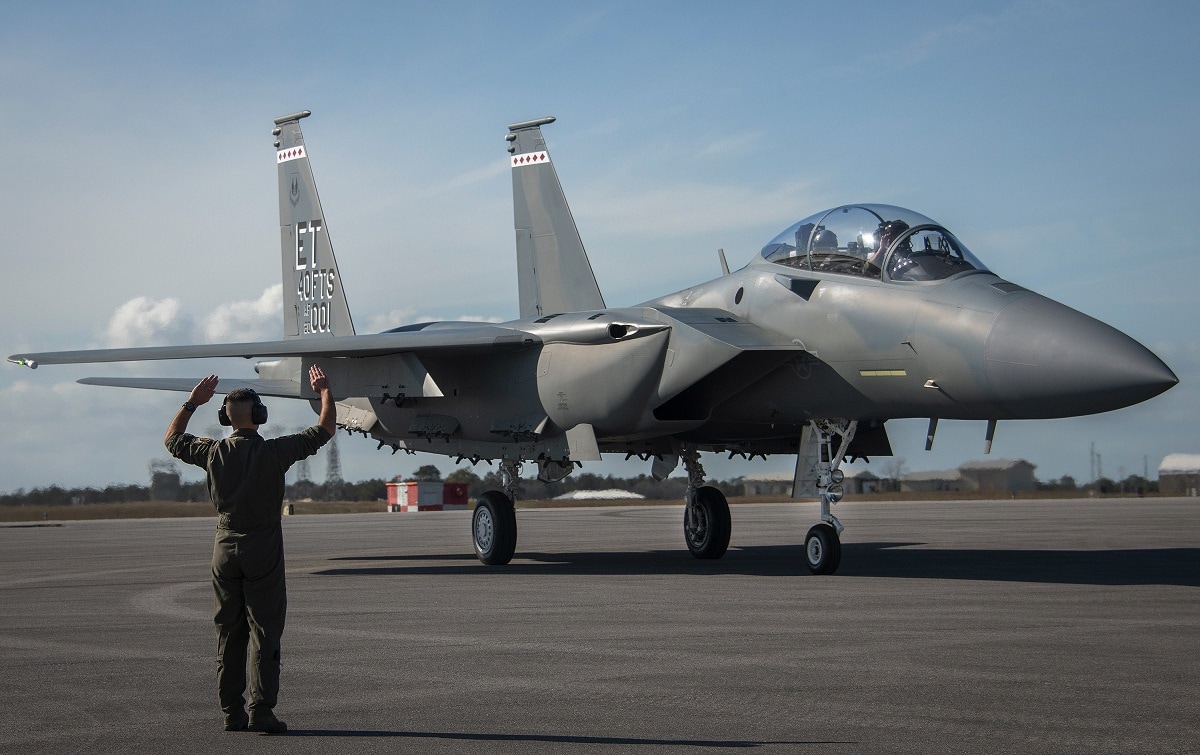Yes, we get it, the F-15EX is no stealth fighter. However, the Air Force doesn’t seem to care and wants the plane to replace older F-15C air frames that are way past their prime. What will happen? Will the Air Force get the planes they say they need?
The U.S. Air Force believes that the F-15EX Eagle II has the longest missile range of any other fighter in its fleet. The F-15EX recently completed a missile weapons test that involved medium-range air-to-air missiles – just what the Air Force is likely to use in a potential conflict with Russia or China. The war in Russia is showing that beyond-visual-range missile shots from fighters and bombers is a tactic that is becoming more common in 21st-century aerial warfare.
What’s New with the F-15EX
Here is more on some of the latest developments for the F-15EX. This month engineers and testers evaluated how well the F-15EX launched two AMRAAMs – the AIM-120D and AIM-120C3 medium-range air-to-air missiles. The analysts conducted a study at Eglin and Tyndall Air Force Bases in Florida to determine the airplane’s stand-off combat capability. The F-15EX can hold up to 12 AMRAAMs. The weapons evaluation team is excited about this test and is confident pilots will have the munitions they need to fight adversaries.
Put a Stake in the Enemy’s Heart
The engineers also tested the Eagle II’s ability to accomplish radar warning, electronic warfare, and jamming capabilities on board. The sensor system gives pilots a 360-degree picture of the battlespace to increase the level of situational awareness with better survivability. This will allow the airplane the ability to fire stand-off missiles but also go into the heart of contested airspace and fight its way in and out successfully. Not everyone believes combat will be smooth for the F-15EX, but we will get to that discussion from the critics in a moment.
How Many Eagle IIs Will the Air Force Order?
The Air Force plans to order 80 F-15EX fighters, although 19FortyFive has reported the program is having difficulties and may not meet that number or the entire program could even be canceled due to cost overruns. The fourth-generation airplane is a big improvement over the F-15 Eagle base model that first flew in 1976. The Air Force upgraded the original Eagle with the F-15C, which became operational in the 1980s, and later the F-15E Strike Eagle. Throughout its lifecycle, the F-15 has achieved at least 100 victories and no losses in combat.
Pilot-Friendly and Easier to Maintain
The idea is for the F-15EX to enhance the fleet of F-35 Lightning IIs. The F-15C and E pilots can switch over to the F-15EX without missing a beat. The F-15EX has a 28 percent larger payload than the earlier Eagle models. Maintenance will be easier since the majority of parts are the same. Training, hangars, maintenance facilities, and other infrastructure will not require any changes. Plus, the factory assembly lines will remain.
A Future Hypersonic Missile Truck
The F-15EX also has fly-by-wire controls and a better airframe to make the airplane more maneuverable and agile during high-G flight. Another interesting feature will be the F-15EX’s ability to launch hypersonic weapons. The F-15EX will also require less maintenance than other F-15 models. The software for the new airplane has been upgraded, and the ability to change mission parameters efficiently and quickly will be a key feature.
However, not all is rosy in the land of the F-15EX. John Venable, who is the Senior Research Fellow in Defense Policy at the Heritage Foundation, has been critical of the F-15EX program in the past because of its exorbitant costs.
“The Defense Department calculates the F-15EX at $110 million. But that does NOT include the cost for simulators, EPAWSS (Eagle Passive Active Warning and Survivability System), or the targeting and IRST (infrared search and track) pods required for combat. Adding in those costs brings the gross weapons systems cost for the F-15EX to $136.7 million—$38.5 million or 39 percent more than a fully loaded F-35A,” Venable wrote in a Heritage commentary in April.
That’s not all, Venable explained. “It shows the cost to fly an F-15E for a full year is $7.7 million, compared to only $7 million for an F-35A. With the additional requirement to maintain EPAWSS and the IRST pod, the F-15EX will very likely cost more, he wrote.
Venable believes the F-15EX is problematic because of the hidden costs. “In the wake of Putin’s invasion of Ukraine and a rising China, we need to field the best fighter anywhere in numbers that matter, and we need to do it now. The F-35A is much cheaper to buy and fly than the F-15EX—and if you are wondering which jet Air Force pilots prefer, just ask them. I did, and those who transitioned from the F-15E to F-35A—or any other fourth-generation fighter—would never go back. Neither should we.”
Could the Money Go Elsewhere?
The F-15EX is also taking money away from the Next Generation Air Dominance (NGAD) fighter that will be replacing the F-22 by 2030. Resources for the Air Force are of course scarce. The NGAD may cost several hundreds of millions of dollars each, so any savings from other programs can help the NGAD come to fruition, which will be a necessity to keep pace with stealth fifth- and sixth-generation fighter development from China and Russia.

An F-15EX fighter jet taxis to its parking spot at Wright-Patterson Air Force Base, Ohio, Nov. 8, 2021. The jet visited Wright-Patt to give the Air Force Life Cycle Management Center’s F-15EX program office the opportunity to see the aircraft up close. (U.S. Air Force photo by Jaima Fogg)


Staff Sgt. Dave Smith and Senior Airman John Pusieski from the 58th Operational Support Squadron, 58th Fighter Wing, peform last-minute checks and arm practice bombs on an F-15E Eagle aircraft from the 461st Fighter Squadron.
But Will It Survive?
Aside from the cost, the other concern is the lack of stealthiness and its ability to survive in contested air space. The F-15EX would have to fly in attack mode with sufficient numbers and endure some attrition. It would also need to depend on electronic warfare aircraft to jam and spoof enemy air defense systems. More aircraft leads to higher costs and more personnel in harm’s way. Is the Air Force ready to deal with a fighter getting shot down and a pilot ejecting into the ocean somewhere in the Indo-Pacific?
It’s Not the Time for an “Expensive Target”
That’s why some are describing the F-15EX as an “expensive target.” My inclination on the matter is to give the airplane a chance and see how it performs in several future joint exercises as it did in Alaska for the Northern Edge training event in 2021. Without more evaluation, it is premature to cancel it at this time. But the Department of Defense should do some soul-searching on this airplane. Air Force planners should have given more accurate forecasts of future costs and thought harder about how survivable this fighter will be in a shooting conflict.
Now serving as 1945s New Defense and National Security Editor, Brent M. Eastwood, PhD, is the author of Humans, Machines, and Data: Future Trends in Warfare. He is an Emerging Threats expert and former U.S. Army Infantry officer.

